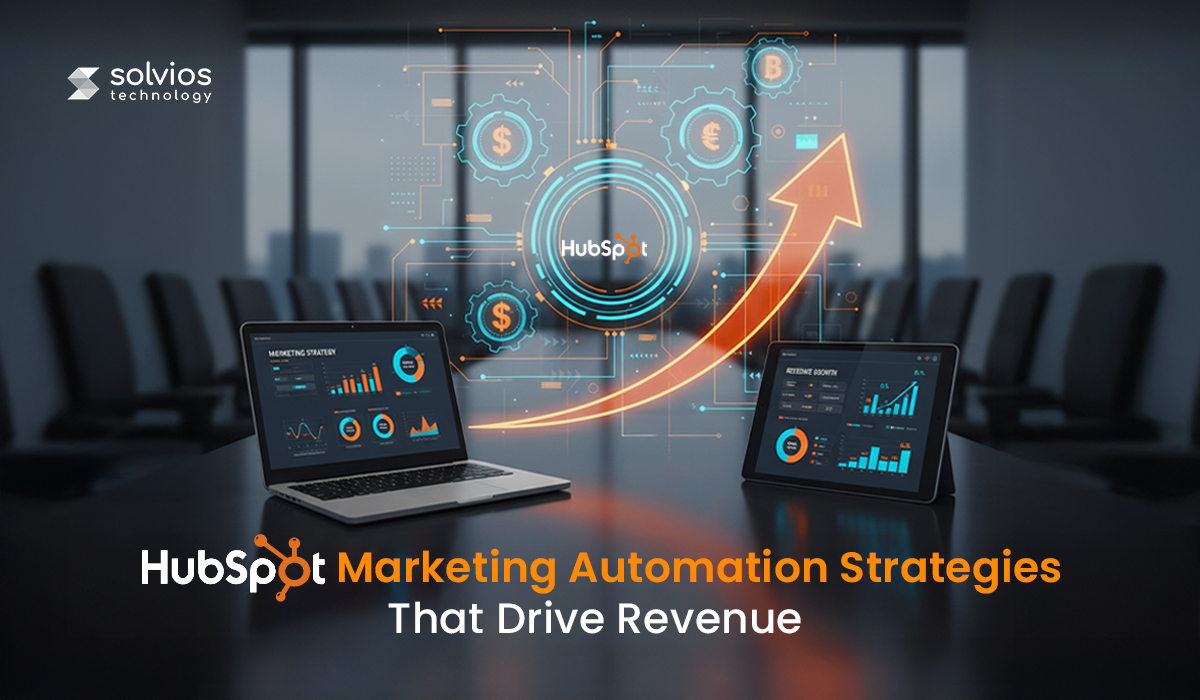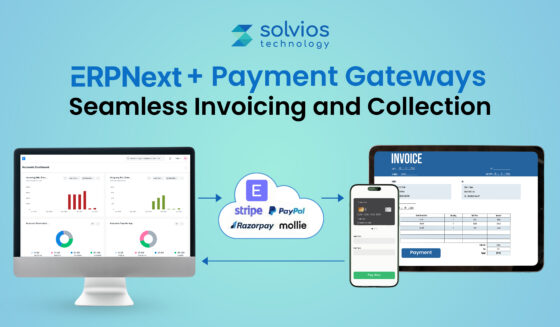
Introduction
Marketing automation isn’t just about saving time; it’s about scaling smarter.
As the customer journey includes more layers than ever, it’s essential for business owners to cover every touchpoint of the conversion process.
However, failing to meet customer expectations with an outdated platform can result in losses rather than conversions.
So what’s the best option?
Welcome, HubSpot, a single platform that incorporates CRM, automation, and analytics into one engine.
This guide provides a closer examination of the role of HubSpot automation and HubSpot services in enhancing marketing strategies and driving measurable sales growth.
So whether you’re optimizing your current setup or starting from scratch, this blog is for you. Continue reading to learn the strategies outlined in the following sections.
Why HubSpot for Marketing Automation?
When it comes to marketing automation, HubSpot stands out because everything inside it connects:
- CRM
- Marketing
- Sales
- Service.
Instead of juggling five different tools, you work inside one ecosystem that shares the same data and speaks the same language.
With HubSpot, you get one software that offers:
1. Unified Platform for Growth
HubSpot brings your entire funnel together, from the first ad click to the closed deal and beyond. Every campaign, email, and conversation syncs with the CRM automatically, so teams don’t chase scattered reports or duplicate leads.
2. Beyond Generic Tools
While tools like Mailchimp, ActiveCampaign, and Marketo do a decent job with specific tasks, they often miss the bigger picture. HubSpot ties automation to real customer context (who clicked, who bought, who needs a follow-up), all in one dashboard.
If you’re curious about how AI enhances HubSpot’s automation capabilities, explore our detailed HubSpot AI Guide for Businesses to understand how artificial intelligence is reshaping automation and marketing efficiency.
3. Built for Scaling Businesses
As companies grow, so do their systems and processes. HubSpot grows with you. Its modular design allows managers to locate details among massive pipelines easily. It saves you from the clutter formed by large data sets.
All such features make HubSpot the go-to option over generic automation tools like Mailchimp, ActiveCampaign, and Marketo.
Need help implementing HubSpot automation or optimizing your workflows?
Contact us todayThe Revenue-First Framework for HubSpot Automation
Most people view HubSpot as a feature list: email builder, CRM, forms, and reports. But that’s not where the real power sits. The innovative teams utilize HubSpot as a revenue system that operates quietly in the background, seamlessly connecting marketing to sales and sales to retention.
Attract – Smarter Lead Capture
HubSpot’s forms and chatbots do more than collect names. They learn. Each visit adds a bit more data through progressive profiling, so your picture of the lead keeps getting clearer. The trick is to set it up once and let it adapt automatically.
Engage – Nurture with Purpose
You’ll notice that most brands use the same drip for everyone. That’s where HubSpot feels different. It enables business owners to create multi-touch journeys tailored to individual prospects. Additionally, the ABM automation enables you to receive personalized messages instead of generic ones.
Convert – From Interest to Action
The handoff between marketing and sales often breaks momentum. HubSpot fixes that with lead scoring and instant alerts for SDRs. The right person reaches out while the lead’s still warm.
Delight – Post-Sale, Not Post-Interest
Most teams stop nurturing after the deal closes. HubSpot doesn’t. It allows users to automate onboarding, follow-ups, and cross-sell triggers based on customer behavior.
That’s where HubSpot’s “revenue-first” approach steps into the picture. It delivers automation that earns back every minute your team spends building it.
Learn more about how AI transforms HubSpot CRM into a smarter, customer-first platform by reading How AI Transforms HubSpot CRM.
Want to discover how automation can turn into predictable revenue?
Talk to a HubSpot Consultant Now10 HubSpot Marketing Automation Strategies That Drive Revenue
Most teams purchase HubSpot to simplify their marketing efforts. The smart ones use it to make revenue predictable. There’s a quiet difference: one treats HubSpot like software, while the other views it as a system that keeps deals moving even when the office is empty.
1. Advanced Lead Scoring Models
Every company says they have a “lead scoring” setup, but few actually trust it. The trick with HubSpot is combining behavior and fit: what someone does and who they are. Visits to pricing, repeated demo requests, and form depth – each signal matters. It’s less guesswork, more math that makes sense.
2. Behavior-Based Email Nurturing
Forget the fixed drip schedule. Let actions trigger the next move. If someone downloads a case study, send them the follow-up that builds on it. If they vanish, pull back. It feels like guesswork, but it’s just HubSpot watching the buyer’s trail in real time.
3. AI-Powered Personalization
Smart Content sounds fancy until you use it and realize it just feels natural. Emails change tone, landing pages reshape themselves. You’re no longer just publishing, you’re conversing. Engagement rises because the experience finally fits the user.
4. Lifecycle Stage Automation
You’ll often see this happen; pipelines become stale because no one updates the contact stages. HubSpot can do that automatically. When MQLs turn to SQLs, the CRM cleans itself. Leaders stop questioning data and start trusting forecasts again.
5. Multi-Channel Campaign Orchestration
Email isn’t enough anymore. With HubSpot, ads, posts, and workflows talk to each other. You see the whole campaign picture where attention comes from and where money returns.
6. Sales Notifications & Task Automation
Speed wins deals. The second a lead crosses a scoring threshold, HubSpot nudges the right rep. Calls get made while interest is still warm, not next week when they’ve already signed elsewhere.
7. Customer Retention Sequences
Renewals, reviews, referrals: they’re often forgotten. HubSpot helps you automate the cycle with reminders. It allows your workflow to stay active without putting extra effort every month.
8. Data Hygiene Automation
The quality of data determines your business output, and HubSpot understands it like no other. It helps structure data efficiently and improves campaigns as your business scales.
9. ABM Playbook Automation
For key accounts, it’s personal. Ads, emails, and workflows adapt according to the company, sometimes even by role. Suddenly, sales and marketing don’t collide; they sync.
10. Revenue Attribution Dashboards
Finally, you see what really drives money in. HubSpot ties every deal back to the campaign that lit the first spark. Decisions stop being opinions; they start being numbers.
That’s what HubSpot does best: turn chaos into clarity, and effort into predictable revenue.
Not sure if your automation setup is truly driving ROI?
Get Your Free HubSpot Automation Audit NowCommon Pitfalls to Avoid
HubSpot automation can streamline your workflow to a great extent, but it can also go wrong fast if you treat it like a machine you “set and forget.” The truth is, automation needs tuning just like any growth engine.
Here are some common pitfalls to avoid during your operations:
- “Set it and forget it” mindset: Although automation streamlines operations, it doesn’t mean you stop monitoring them. Things drift when they’re not configured. Therefore, ensure you audit your systems at regular intervals.
- Poor segmentation: Not every contact deserves the same email. When all leads get identical drips, engagement tanks. Segment by intent, behavior, and stage; the difference in response will surprise you.
- Over-automation: It’s tempting to automate everything. Don’t. Too many triggers make your communication sound robotic. Keep a human voice that makes automation feel like an assist, not impersonation.
- Ignoring reporting: Without attribution, you’re guessing. Check dashboards weekly; the data tells you what’s really working.
- Sales and marketing misalignment: If automation stops at Marketing, leads die in transition. Ensure the sales team views the same context as the others. It improves efficiency and sales.
Not sure if your team is using HubSpot to its full potential? Discover when to meet a HubSpot consultant to optimize your automation strategy and ensure your marketing and sales processes work in perfect alignment.
Future of HubSpot Marketing Automation (Trends to Watch)
HubSpot’s automation is evolving rapidly; what felt advanced two years ago is now a standard. The next phase isn’t about doing more; it’s about doing smarter.
Here’s a closer insight into the future of HubSpot marketing automation:
#1 AI and Predictive Analytics
Thanks to the technological advancements, HubSpot is evolving as a platform that uses data to predict user behavior before customers make their next move. From forecasting deal outcomes to recommending send times, AI will eliminate the guesswork from campaigns. It’s not flashy, it’s simply sharper.
#2 Deeper CRM and ERP Integrations
Marketing won’t live in isolation anymore. HubSpot’s newer integrations with ERP systems, finance apps, and data warehouses mean decisions won’t depend on partial views. Everything connects: inventory, pipeline, and performance.
#3 Omnichannel Orchestration
Emails are no longer the hero. Expect automation to sync with chat, SMS, WhatsApp, and even voice touchpoints. The customer journey will finally resemble how people actually communicate in real-time.
#4 Privacy-First Personalization
With stricter regulations in the future, personalization will require more consent-based tracking than ever. HubSpot’s already adapting, giving marketers context without crossing boundaries.
The future isn’t “more automation.” It’s smarter, cleaner, human-first automation, and HubSpot’s ahead of the curve.
Conclusion
Automation delivers ROI only when it aligns with a clear strategy, not when it’s used for the sake of convenience. HubSpot proves that when data, messaging, and process work together, revenue follows naturally.
If you’re serious about uncovering what your automation could be doing better, let’s find out together.
Need expert guidance on HubSpot CRM or automation setup?
Contact Solvios to Get Started Today.Frequently Asked Question
HubSpot marketing automation helps businesses streamline marketing tasks like email campaigns, lead nurturing, and reporting — all from one connected CRM platform.
It aligns marketing and sales, automates lead follow-ups, and tracks ROI — helping convert leads faster and drive predictable revenue.
Top strategies include lead scoring, behavior-based emails, lifecycle automation, AI personalization, and revenue attribution tracking.
Most businesses see ROI within 3–6 months, depending on setup quality, campaign consistency, and data accuracy.
AI improves personalization, predicts buyer intent, and automates engagement timing for better conversions and customer experience.
Solvios Technologies offers end-to-end HubSpot setup, automation strategy, and optimization to help you boost leads, sales, and efficiency.
Tags
Related Blog
Want to get started with App Development?
These applications are acquiring enormous prevalence by offering hands-on enterprise mobility solutions for organizations around the globe.
Start A Conversation















